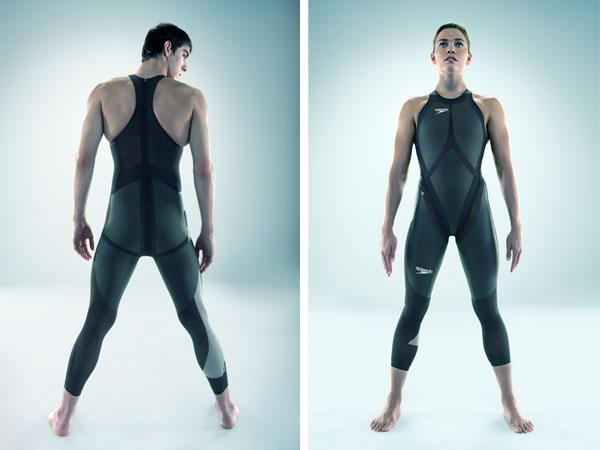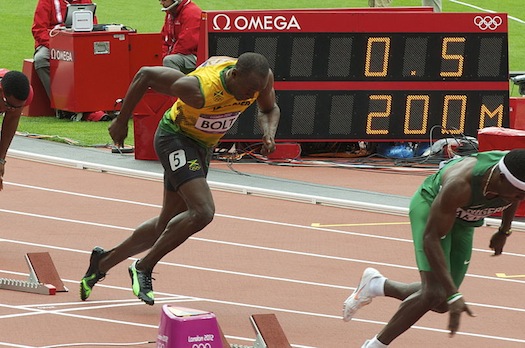We may earn revenue from the products available on this page and participate in affiliate programs. Learn more ›

First of all, let’s set the record straight. Man is a natural long distance runner. Despite impressions to the contrary foisted on us daily from our predominantly sedentary and “well-fed” modern lifestyle, it is interesting to note that for long enough distances a well-trained human can outrun just about any other creature on the planet.
Of course, recognizing the health benefits of exercise, not all of us live a sedentary life, and running has become a popular form of physical activity. In addition to the exercise aspects, however, those of us with a competitive or goal-oriented nature, from the elite athlete to the recreational runner, might be interested in running faster. Obviously accomplishing a 5K personal best or qualifying for the Boston Marathon requires a solid training program and a substantial amount of hard work. But what about those incidentals that might enhance our ability to train and thus augment our performance on race day? (We’re not talking about performance-enhancing drugs here.)
That’s where the video comes in.
Running is a complex biomechanical phenomenon and this advertisement caught our attention because the design of these innovative shoes appears to seriously take some of the science into account. We are not endorsing a product here (especially since we haven’t actually tested the shoes yet), however, let’s analyze some of the issues presented in the video.
The major feature that separates these shoes from most other standard running footwear is that they force the runner into a mid-foot to fore-foot landing on each stride. Most running shoes have a large well-cushioned “heel counter” that makes it possible to strike the ground heel first without damaging the foot. While we do naturally walk heel first, it is true that heel striking is an inefficient way to run. Apropos of the video, let’s apply Newton’s third law. In order to land heel first, the foot must make impact in front of the center of gravity of the runner. This requires that the heel is going to push into the ground with a component of that force in the forward direction. The ground will then exert an equal and opposite reaction force, which means that there will be a braking effect on each stride. A mid- to fore-foot landing is going to take place more directly underneath the runners center of gravity alleviating this undesirable hindrance to forward motion.
In fact, consider the following: Man evolved to run barefoot, and shoes arrived on the scene only in the last few tens of thousands of years or so. Try running barefoot some time (preferably on a softer surface like grass) and pay attention to your foot strikes. You might find that it’s almost impossible to land heel first. Your command central (your brain) just won’t let you do it. Too much jarring. Your bare heel isn’t designed to handle that pounding. The evidence supports that landing nearer the middle to front of the foot is the most efficient way to go. However, heel strikers should be advised that it might take some time to retrain your gait so that this feels at all natural. Trying to reform too quickly from a lifetime of heel striking could be a recipe for injury.
Finally what about those “actuator” thingies on the bottom of the shoe? The claim (put in more specific physics terms) is that they store elastic potential energy upon compression which is transformed back into kinetic energy upon push-off. While it is undoubtedly true that this must be happening to some extent, just like with a bouncy ball, the question remains as to what magnitude of an overall effect this could actually have. Let’s do a rough estimate:
Exhibit A: The kinetic energy of a 75 kg runner moving at a speed of 4.0 m/s = ½ mv2 = 600 Joules.
Exhibit B: The amount of energy stored in a highly energy efficient spring (spring constant k = 1000 N/m) compressed a distance x = 1.0 cm (.01m) = ½ kx2 = 0.05 J.
Based on this calculation, it shouldn’t surprise us that most of the elastic energy stored and released during the running motion takes place within the muscles of the body itself. The elastic properties of the shoes appear to be incidental and probably aren’t going to make a lot of difference!
Nevertheless, one out of two ain’t bad, and these shoes do represent one of the more interesting innovations in running shoe technology to come around in a long time.
Adam Weiner is the author of Don’t Try This at Home! The Physics of Hollywood Movies.






